A BOLD GIVING INITIATIVE: Sustainable Agricultural Development Program
BUILDING PATHWAYSOUT OF POVERTY IN UPPER EGYPT
introduction
The Sustainable Agricultural Development Program (SADP) seeks to address poverty, unemployment, and hunger among marginalized communities in Upper Egypt, by partnering with local NGOs and governments to pilot and scale a set of tailored agricultural practices. SADP is part of the Egypt Network for Integrated Development (ENID), a multi-stakeholder partnership with the United Nations Development Programme (UNDP) and other local and international donors, under the umbrella of the Egyptian Ministry of International Cooperation. ENID was established to promote economic and social development in the region.Why bold
SADP identifies effective approaches to agricultural development from around Egypt and globally, and pilots these practices in Upper Egypt, based on local community needs. SADP then facilitates the scaling of these practices across Egypt, by partnering with others and sharing what works, with the aim of alleviating poverty and addressing local community needs.The details
Engage the community
Deeply understand community needs and the best approaches to address them
Partner with others
Identify and collaborate with the right implementation partners
Learn and evolve
Invest in monitoring, learning, and advocacy
Apply all assets
Use expertise, networks, and reputation, alongside philanthropic capital
Primary philanthropist THE SAWIRIS FAMILY
established 2012
Primary Focus AGRICULTURE AND LIVELIHOODS
geography UPPER EGYPT
Fast facts
THE OPPORTUNITY FOR IMPACT
The Sawiris Foundation for Social Development has long focused on helping marginalized people throughout Egypt build dignified, productive lives. With its founding family originally from Upper Egypt and its many years of engaging in philanthropy there, the Foundation understands all too well that improving livelihoods in the region is uniquely challenging.
More than half of Upper Egypt’s population lives on less than USD 1 per day. Farming is the primary source of livelihood, yet it rarely generates sufficient income for families – or even enough food. Nearly 40 percent of the people in Upper Egypt’s rural communities3 lack access to enough food to stay healthy.
“Agriculture is a very significant economic sector in Upper Egypt, and we see it as a huge opportunity to make a difference in poverty and food security,” says Noura Selim, the Foundation’s executive director. “It links to the core of what we do – economic empowerment.”
The Foundation knows the path to progress will have to navigate myriad challenges. The region’s farmers are often unaware of higher-productivity farming practices, or cannot afford the capital purchases required to adopt them. They have limited access to markets for selling their crops, and have few opportunities for off-farm work to supplement their farming income, given the region’s difficult labor market.
Historically, many of the region’s initiatives to alleviate rural poverty, such as universal food subsidies, have fallen short—often because they were too top-down and did not sufficiently address this constellation of needs and constraints.
In 2012, when the Foundation learned of a compelling new program that would introduce an array of agriculture solutions based on a deep understanding of the communities’ needs, it seized the opportunity.
A BOLD INVESTMENT
The program, called the Sustainable Agricultural Development Program (SADP), was part of the newly launched Egypt Network for Integrated Development (ENID). ENID is a multi-stakeholder partnership with the United Nations Development Programme (UNDP) and other local and international donors – under the umbrella of the Egyptian Ministry of International Cooperation – which aims to reduce poverty in Upper Egypt. SADP’s goals were to create income-generating opportunities and improve food security for people in the rural communities of Upper Egypt.
When the ENID team approached the Sawiris Foundation for Social Development about partnering, SADP stood out to the Foundation for its bold approach: identifying innovative agricultural and off-farm practices in other geographies; adapting and piloting the practices in Upper Egypt (informed by a strong understanding of local community needs and network of experts); prioritizing rigorous measurement and evaluation to identify the most effective practices; and scaling those practices broadly, using local partnerships and evidence-based advocacy.
“SADP is largely a learning initiative, with various well-designed pilots and continuous publication of results,” explains the Foundation’s executive director, Selim. “That was one of the reasons we wanted to be involved with SADP from the beginning.”
In 2012, the Foundation committed USD 1.3 million to Phase I of SADP’s work and was its primary donor. In addition to capital, the Foundation brought its expertise in economic empowerment and agriculture to the program.
“Our relationship with the Sawiris Foundation for Social Development is truly a strategic partnership,” says SADP director and initiator Dr. Dyaa Abdou. “They have been involved every step of the way.”
Phase I focused on Qena, one of the poorest c in Upper Egypt. There, SADP piloted six agricultural practices, from milk processing to farmer field schools. Across 25 villages, SADP trained over 3,000 individuals (surpassing its pilot participation targets) and created 900 job opportunities in sustainable agriculture. NGOs and government entities are now adopting some of the successful Phase I practices, including integrated fish farms and agricultural waste recycling, across Upper Egypt.
Building on these strong results, the Foundation has committed an additional USD 1.5 million to support SADP’s work through 2021, with a focus on deepening its efforts in Qena and piloting new practices.
An NGO partnership:
Raising goats to generate income
In the village of Al Bahari Qamoula, 70 percent of people live below the poverty line. The local Development and Environment Association partnered with SADP in a Phase II pilot project for raising a highly productive “Shami” breed of goats, introduced in Upper Egypt for the first time.
SADP and the NGO teamed to recruit 10 women for the pilot, providing each of them with three pregnant goats and training them in animal rearing practices, as well as in veterinary and extension services. The goal: to empower women to raise their family income.
Although still in its early stages, the program is already seeing results. The goats are producing three to five kilograms of milk daily. Sold at a price of USD 0.5 per kilogram, the milk is significantly increasing family income. Two of the newborn goats from each family are donated to other poor families, with the help of SADP and the local Association, thereby extending the program’s reach.
The Development and Environment Association is eager to continue partnering with SADP. “We are ready to do more projects,” says Haleema Orabi, a facilitator from the local association. “There are so many more families that we can help together through this and other programs.”
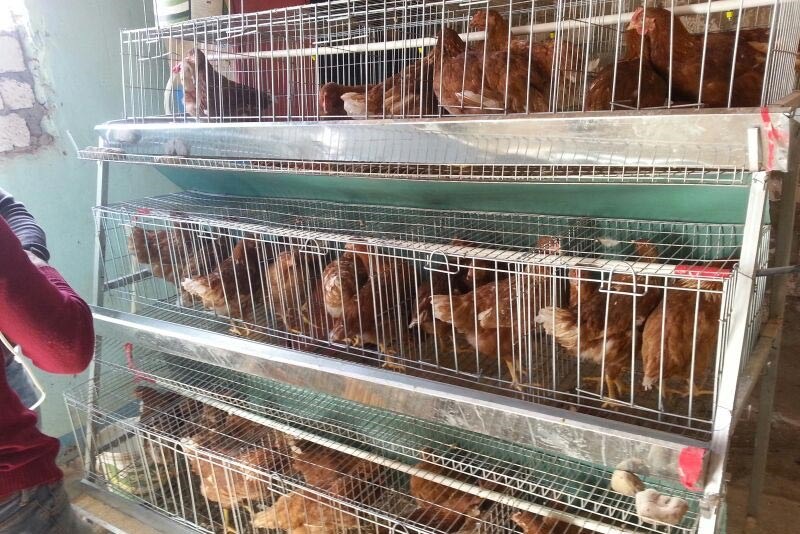
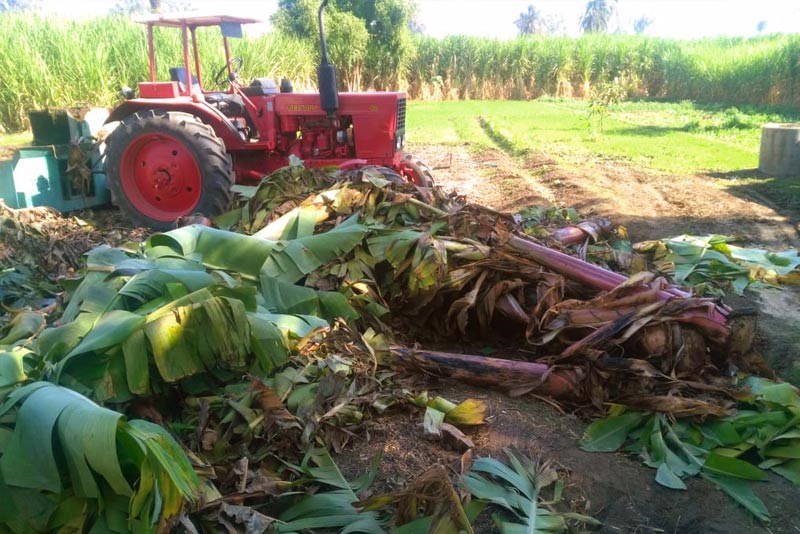
“Agriculture is a very significant economic sector in Upper Egypt, and we see it as a huge opportunity to make a difference in poverty and food security. It links to the core of what we do – economic empowerment.”
Noura Selim Executive director, Sawiris Foundation for Social Development
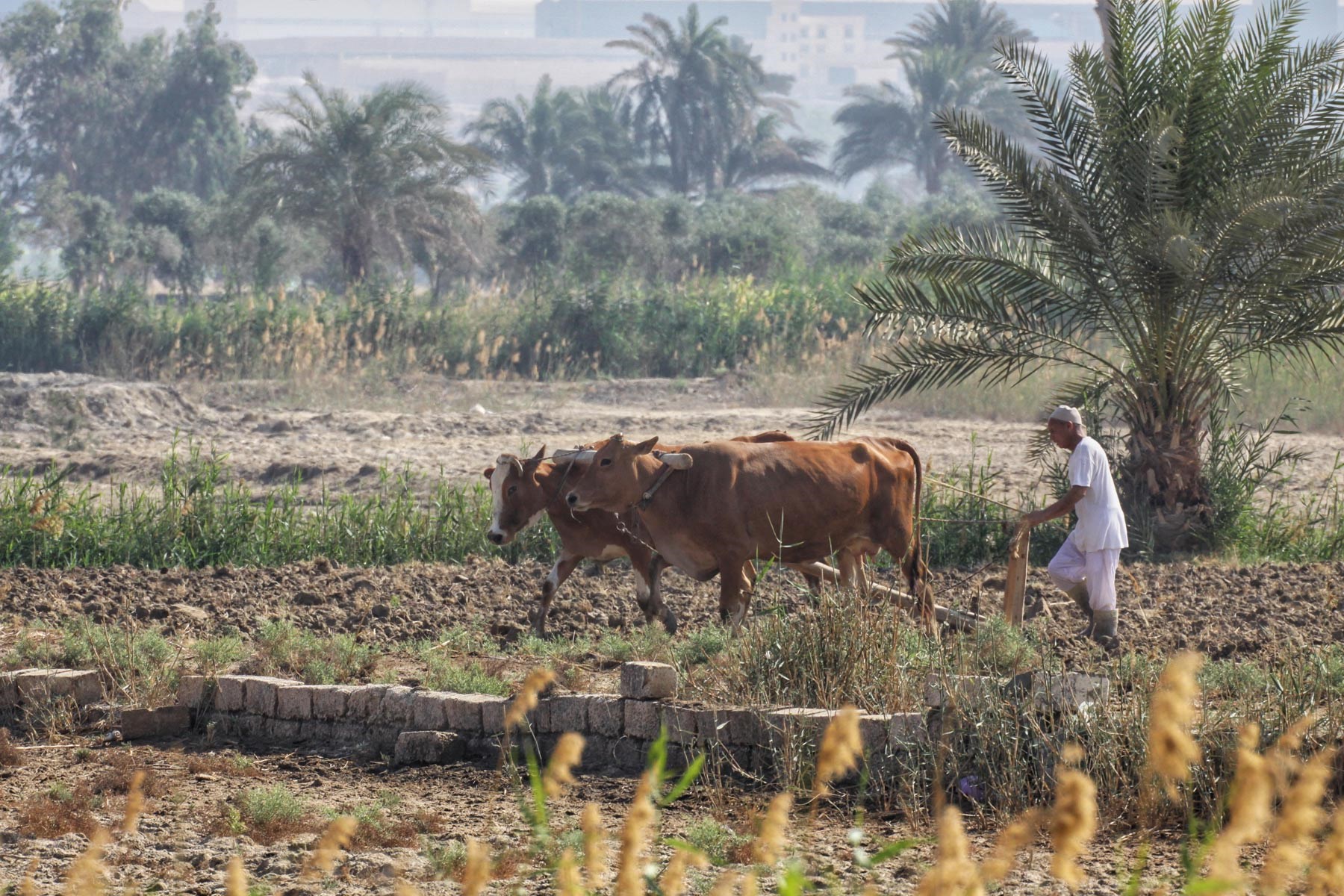
HOW THE INITIATIVE WORKS
SADP, in close partnership with the Sawiris Foundation for Social Development, uses a four-step approach to address poverty, unemployment, and hunger in Upper Egypt.
1. Understand community needs in Upper Egypt
Working with experts in different fields from research centers and universities across Egypt, SADP visits villages in its target Upper Egypt communities, to investigate primary crops and yields, farming practices, environmental factors (such as climate and topography), and water and resource accessibility. They survey residents, who help identify the most critical gaps in the area’s agriculture. They also meet with local Community Development Associations to learn which types of agricultural practices and income-generating activities would be most relevant.
Through this process, the team learns which parts of the crop-specific agricultural “value chains” – which span from inputs (including seed and fertilizer), to production and harvesting, to marketing and distribution – require the most work.
The Foundation supports SADP in conducting the needs assessment, sharing experiences and lessons from its other programs in Upper Egypt, and providing technical expertise on economic empowerment and agriculture.
2. Identify best practices that fit the community’s context
SADP looks for successful practices that match the needs of its target Upper Egypt communities. It gathers secondary information from its network of experts and taps its collective knowledge of effective agricultural methods used elsewhere in the world. Together with the Foundation, the group looks for innovative practices related not only to core farm functions but also to off-farm activities, such as beekeeping. They prioritize approaches that help create integrated value chains – for example, by linking farmers to markets.
They also search across geographies with similar characteristics to Upper Egypt (such as primary crops and environments), which has taken them to other regions in Egypt and further afield to India and Bangladesh.
3. Pilot practices in Upper Egypt and evaluate their effectiveness
SADP and its network of experts customize the promising practices from other geographies to the local context in Upper Egypt. They start small; piloting each new approach, conducting feasibility studies, and adjusting practices as needed.
SADP runs some pilots on its own and enlists NGO and government partners in others. The objective is to determine if the practices are successful and replicable before scaling them across Egypt. Thus, SADP invests heavily in pilot measurement and evaluation. It establishes clear objectives with detailed milestones (such as the number of individuals trained and jobs created) and prepares quarterly progress reports that document achievements, lessons learned, and future plans.
The Foundation monitors SADP’s progress, meets regularly with SADP’s leadership, conducts field visits to understand pilot development, and supports evaluation efforts.
4. Scale effective practices through partnerships, advocacy, and knowledge sharing
SADP’s goal is to identify the most effective practices across its various pilots and engage with local partners to implement them across Egypt.
“SADP is not about delivering services directly ourselves,” says Abdou. “It’s about building the right model, which can be taken on by others.”
SADP selects local NGOs with goals and capabilities that align with its own, such as empowering women, supporting their livelihoods, and engaging the community. It then trains these NGOs, and in some cases the local government, on how to implement and evaluate a given practice. Where the Sawiris Foundation for Social Development has relevant networks, it helps foster these connections.
These partnerships are mutually beneficial. The NGOs and local government share their deep knowledge of the local villages’ agricultural resources and challenges. SADP provides its local partners with technical assistance and capacity-building support.
“When we first started working in Upper Egypt, none of the farmers knew what agricultural recycling was, and farmers used to burn their waste,” says Nahed Yousry, social empowerment director at the Sawiris Foundation for Social Development. “Now, we have brought our agricultural recycling program to 10 to 12 villages in Qena governorate.”
Beyond direct local partnerships, SADP actively shares what it learns about effective practices, so other organizations can adopt and scale these approaches. It engages in evidence-based advocacy efforts, publishing policy briefs and case studies, and hosting and participating in conferences to influence the efforts of government and other NGOs. The Foundation is heavily engaged in these efforts.
“We work to help spread the learning, pilot the project in different settings, and enlist others to take on these impactful interventions in agriculture,” says the Foundation’s executive director, Selim.
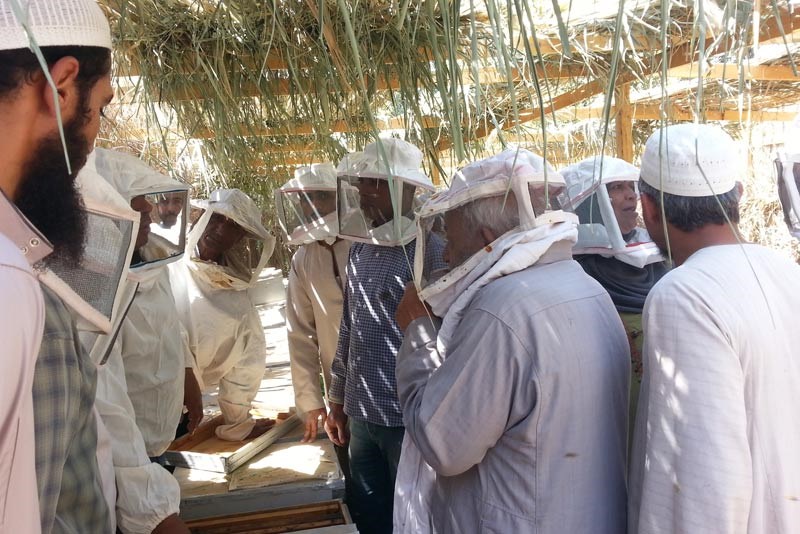
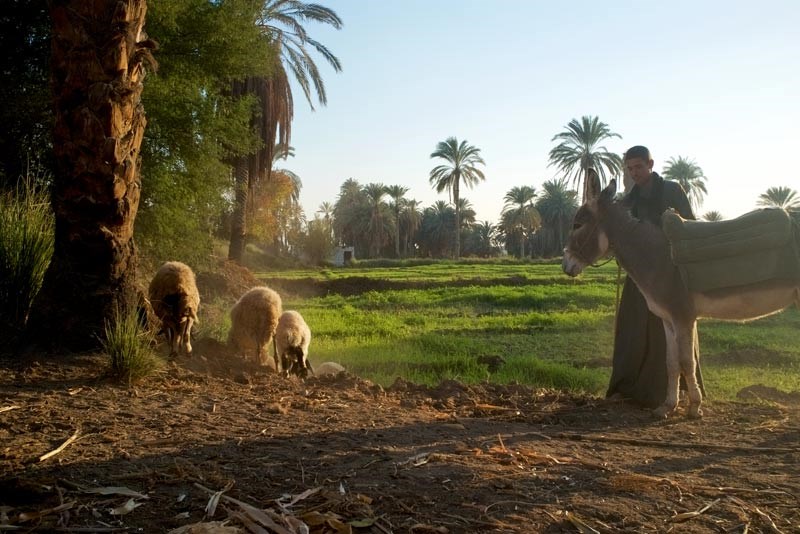
SADP'S FOUR-STEP APPROACH
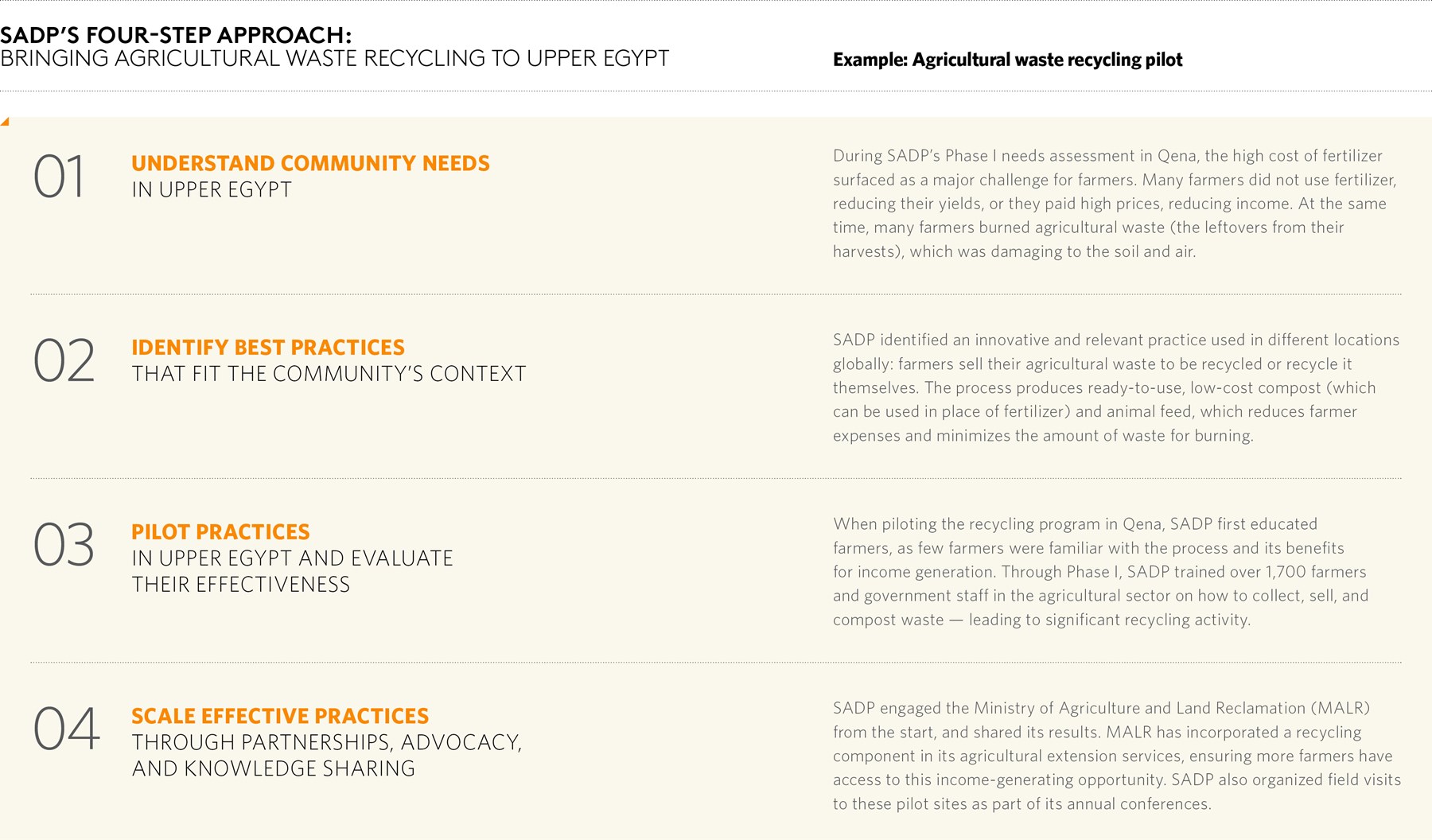
MAP OF PHASE 1 PILOTS ACROSS QENA
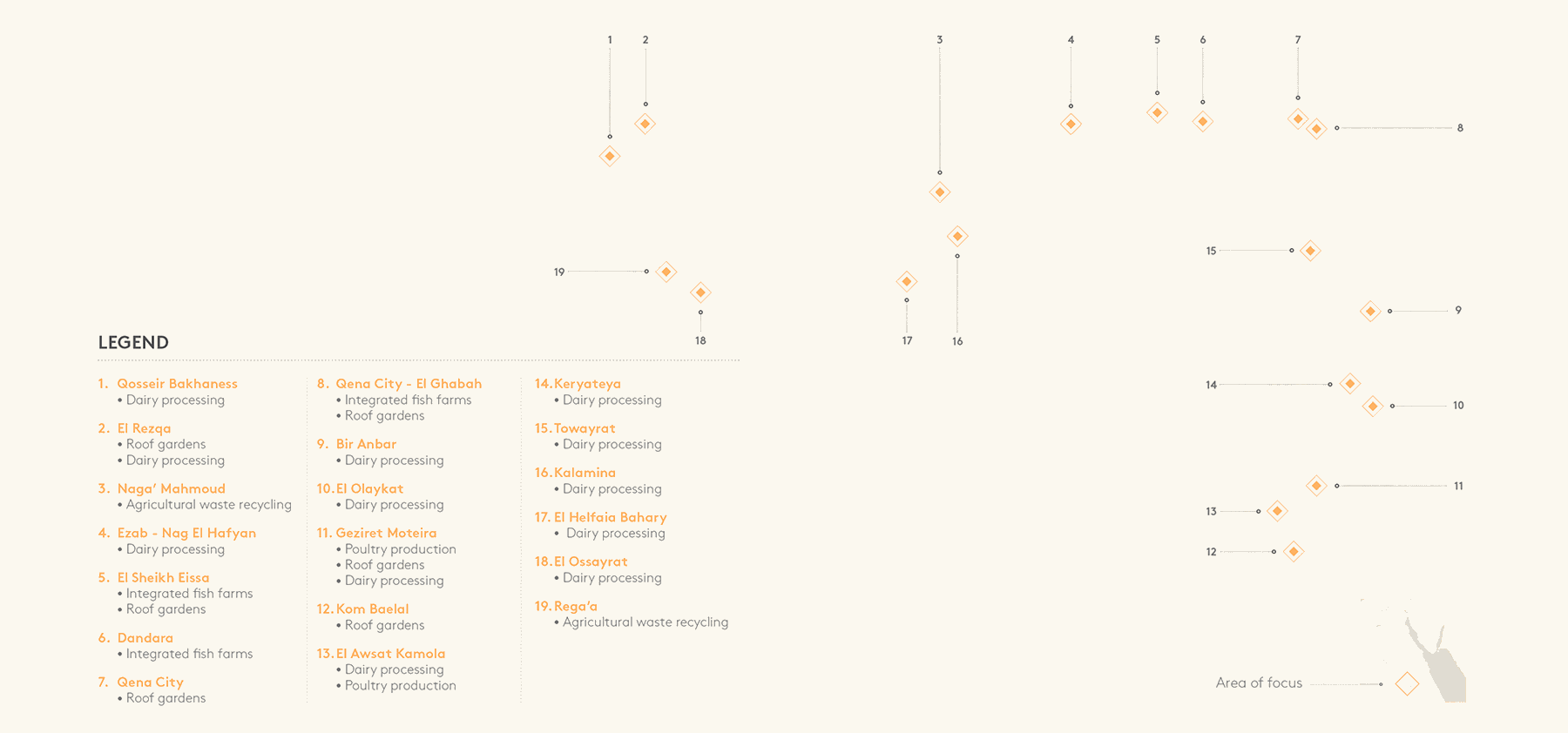
PROGRESS AND RESULTS
Achieving and scaling impact
Thus far, SADP surpassed its Phase I pilot targets. As mentioned earlier, SADP and its partners trained over 3,000 people across 25 Qena villages on different agricultural practices – well above its target of 890. SADP also created 900 job opportunities in sustainable agriculture through these pilots, almost double its target of 470. Nearly half of the jobs were created for women, who traditionally have not been able to work outside of their homes.
“Once these women have an opportunity to work, they can contribute to making money for their families and also feel more empowered as individuals,” says Ali Maher, SADP’s field coordinator in ENID’s Qena office.
While SADP saw encouraging results across each of its six pilot projects in Phase I, the organization believes the agricultural waste recycling program, integrated fish farms, and farmer field schools are its most successful efforts. Those three projects realized their participation targets and improved livelihoods, leading the government and other NGOs to replicate their approach and thereby scale their reach.
SADP’s efforts have also started to influence the government more broadly. “After our last conference, we heard from many governorates from across Egypt that are interested in taking up our projects,” says Dr. Waleed Brekaa, regional manager of ENID’s Qena office. “They were most impressed by the strong body of evidence we collected during Phase I.”
By working closely with government, SADP is embedding its practices in existing systems and contributing to long-term change.
Navigating challenges
Not all the Phase I pilots have performed as compellingly. For example, the roof gardening project, while successful in urban areas, did not show strong results in rural settings. Families in rural areas saw less of a need for the roof garden, given that their larger plots of land allowed them to farm much of their own food.
“The roof gardening at the village level did not work very well,” concedes Abdou. “We tried very hard, and while we have seen some results, we still have work to do.”
Based on these initial pilot learnings, SADP is starting to shift to growing Azolla algae on the rooftop gardens, as the crop is in demand for animal feed.
The varied results across pilots underscore the merit of SADP’s disciplined approach – investing heavily at the pilot stage in gauging a practice’s potential in the region, before deciding whether and how to scale it.
Progress in SADP’s Phase I efforts, more generally, was often hard-won. The team had to navigate the many rules and regulations that govern Egypt’s agricultural sector. One roadblock: it took longer than expected to acquire commercial licenses to process milk.
Finding the right partner NGOs was also challenging. Some partnerships did not succeed, and SADP had to invest in developing a more extensive questionnaire to identify NGOs that aligned with SADP’s objectives (notably, community engagement and women’s empowerment) and had the right capabilities to conduct the work (including reporting and financial accounting systems). SADP is using these learnings to inform its subsequent efforts.
Financial sustainability has also been an ongoing concern for SADP and the other ENID programs. To enhance its funding sources for all its programs, ENID created the El Nidaa Foundation in 2016. El Nidaa raises funds from a range of donors, including the Sawiris Foundation for Social Development, Coca-Cola, and local Egyptian philanthropies. The goal is for El Nidaa to continue supporting ENID’s investments, even after UNDP and other foreign donors end their funding.
Moving forward
In 2017, the Foundation committed USD 800,000 for Phase II, which will extend through 2021. “The second phase aims at ensuring the sustainability and scalability of the successful practices, with an intention to cover further stages of the value chain,” says SADP’s Abdou.
With this support, SADP expects to pilot eight practices in Phase II that train at least another 1,400 people and provide employment to 1,000 job seekers. These pilots range from helping to boost beekeeping and honey production to training rural women on effective goat-raising practices.
In November 2018, the Foundation also agreed to invest USD 730,000 through El Nidaa Foundation to support a significant Qena-based SADP project focused on sericulture—silkworm rearing and natural silk production. The project runs through 2021 and focuses on the entire sericulture value chain, including: the cultivation of mulberry trees (whose leaves are a vital food source for silkworms), silkworm rearing, and silk reeling and weaving.
The project aims to provide 1,500 training opportunities and 835 jobs (targeting 37 percent women) in Qena. SADP believes the project has a high potential for increasing export earnings.
The Foundation and SADP are already thinking about partnering beyond 2021, to further identify potential practices and continue expanding partnerships with NGOs and local government agencies in Upper Egypt.
Phase II Project: Extension of Agricultural Waste Recycling: Banana Value Chain
After seeing the positive results of the Phase I agricultural waste recycling pilot, particularly with bananas, SADP realized it could have greater impact if it reached further down the agricultural waste value chain, taking agricultural waste to markets. In Phase II, SADP is piloting an approach to use fibers from banana waste to produce handicrafts.
The organization has trained five local women in “Al Balad” CDA in Abu Tesht District to use a machine that is newly manufactured in Egypt to extract the fibers from banana stems. The fibers are then sent to another group of 15 local women who have been also trained through SADP to weave them into bags and other crafts.
While still in its early stages, the project is already enabling these women to generate income for the first time. If successful, SADP will invest in purchasing more machines and training more women in nearby villages, to create a steadier stream of fiber extraction, product development, and job opportunities
for women.
INTEGRATED FISH FARMS
Using an approach imported from the Nile Delta region, SADP established two integrated fish farms in Qena’s Al Ghab and Sheikh Essa villages.
- Pilot participation: As of December 2016, SADP and its partners trained 102 people in the approach, helping to bring more food to Qena families at a lower cost.
- Uptake: The local Qena government and an NGO have fully implemented integrated fish farms.
“[For the government fish farm], government provided the land, we provided the recruitment, know-how, training, and so on. Now the whole project is being run almost entirely by the government.”
— Dr. Dyaa Abdou, director, SADP
FARMER FIELD SCHOOLS
SADP held 27 farmer field school sessions, adopting this group-based approach, which focuses on interactive learning experiences and learning-by-doing field exercises.
- Pilot participation: The schools trained 426 farmers and agricultural extension officers to grow and market crops (including fennel, sesame, and lima beans) that best advance farm productivity and income.
- Uptake: Qena’s government has taken up the approach, with the Ministry of Agriculture and Land Reclamation implementing schools based on this model (starting with eight schools in 2015).
“We showed that government is adapting our ideas. It was very good for us to see the farmer field school including recycling of agricultural waste, which became a norm of the Ministry of Agriculture at Qena.”
— Dr. Dyaa Abdou, director, SADP

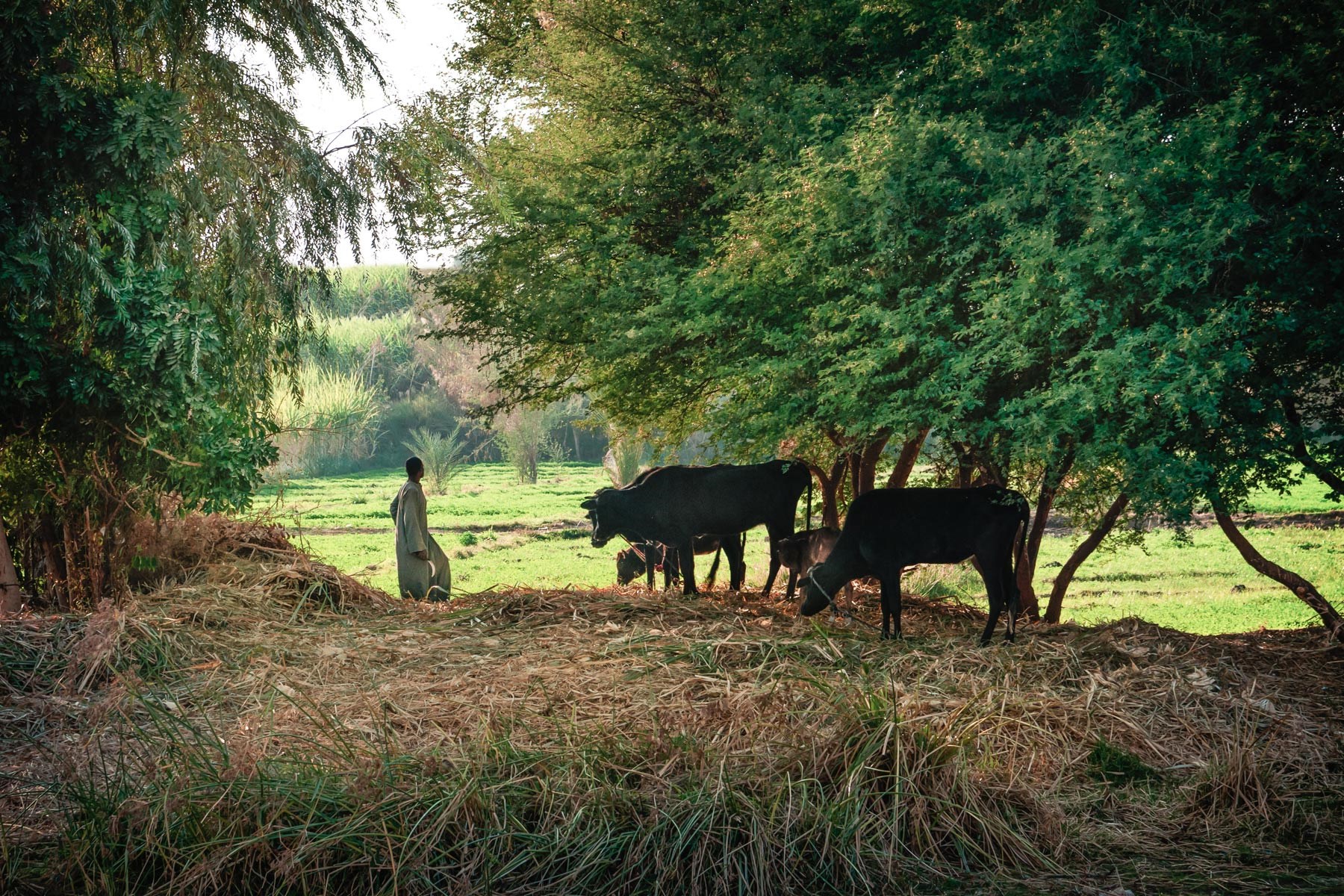
KEY LEARNINGS FOR PHILANTHROPISTS
Engage the community
Deeply understand community needs and the best approaches to address them
With the Foundation’s financial and strategic support, SADP invests significant time conducting needs assessments in the communities of Upper Egypt, including baseline surveys, data collection, and extensive workshops with local Community Development Associations. Once it understands the local needs and challenges from the ground up, SADP engages in expert consultations and field visits to identify agricultural interventions (in Egypt or globally) that stand the best chance of empowering communities, enhancing livelihoods, and improving food security.
In particular, the team seeks innovative practices that will bolster agricultural value chains, such as by strengthening linkages between farmers and markets.
Partner with others
Identify and collaborate with the right implementation partners
SADP strives to sustain and scale effective agricultural practices by working with local partners—a key motivation for the Foundation’s investment. SADP has selection processes and tools (such as an extensive questionnaire) to ensure that the partners’ goals and capabilities align with its own. SADP then includes these local partners – NGOs as well as government – in the project design stage and trains them in the process. This helps develop buy-in and align priorities from the start, while ensuring partners can ultimately implement the practices independently.
Learn and evolve
Invest in monitoring, learning, and advocacy
SADP has a robust measurement and evaluation process for defining key metrics, tracking progress, and testing each pilot intervention’s impact and scalability. The Foundation strengthens these efforts by sharing its own team’s expertise in agriculture and engaging closely with SADP’s monitoring processes. SADP widely shares what it learns in the field, to advocate for other actors to scale effective practices.
As of 2016, SADP has published three policy briefs and five case studies that showcase insights from its work. It has also helped government stakeholders adopt successful practices, including farmer field schools and agricultural waste recycling. SADP and the Foundation believe such evidence-based advocacy can inform NGO and government uptake of projects and policy decisions more broadly.
Apply all assets
Use expertise, networks, and reputation, alongside philanthropic capital
The Foundation leverages its knowledge and experience in Upper Egypt to advance SADP’s efforts. The Foundation’s expertise in economic empowerment, agriculture, and impact measurement help SADP select, design, monitor, and share lessons from the pilots. The Foundation also uses its local networks to facilitate government connections and spread learnings more broadly, and its reputation raises SADP’s profile and credibility.
“The Sawiris Foundation for Social Development’s name carries a lot of weight in Egypt and adds legitimacy to our work in the eyes of other funders and the government,” says SADP’s Abdou.

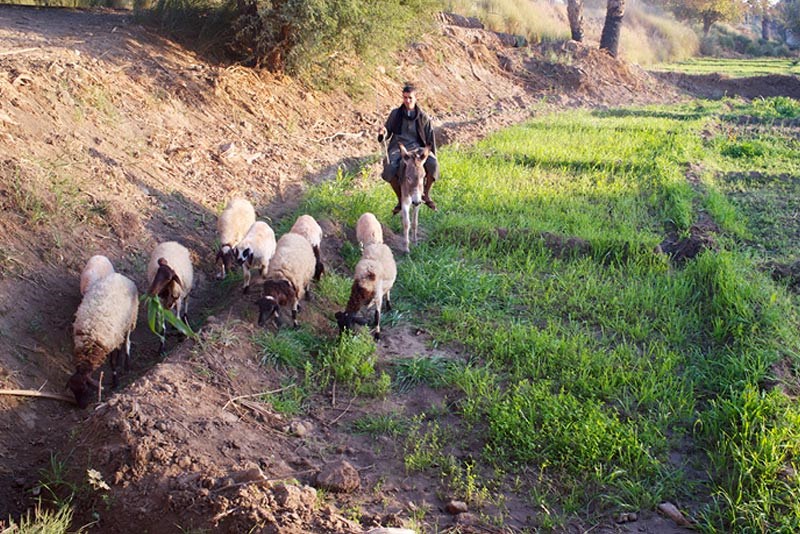
ABOUT THE PHILANTHROPISTSTHE SAWIRIS FAMILY
Overview
The Sawiris family, which owns the Orascom conglomerate, has long supported social development in Egypt. In 2001, the family established the Sawiris Foundation for Social Development, which has played a prominent role not only in its home country, but also in the international development community. The Foundation places an emphasis on sustainable philanthropy; its mission is to “contribute to Egypt’s development, create sustainable job opportunities, and empower citizens to build productive lives that realize their full potential.”
In 2005, the United Nations Economic and Social Council granted the Foundation special consultative status. From 2001 to 2018, the Foundation donated approximately USD 57 million and reached as many as 212,000 individuals across Egypt.
APPENDIX: References
For access to the full case study, with references and additional features, click here.
Bold giving initiatives
Philanthropists are catalysts for bold initiatives taking place across the Arab region. Explore below to learn more about the impactful work underway. For details of other notable projects in the region, click here. To access further research and notes on the selection process, click here.
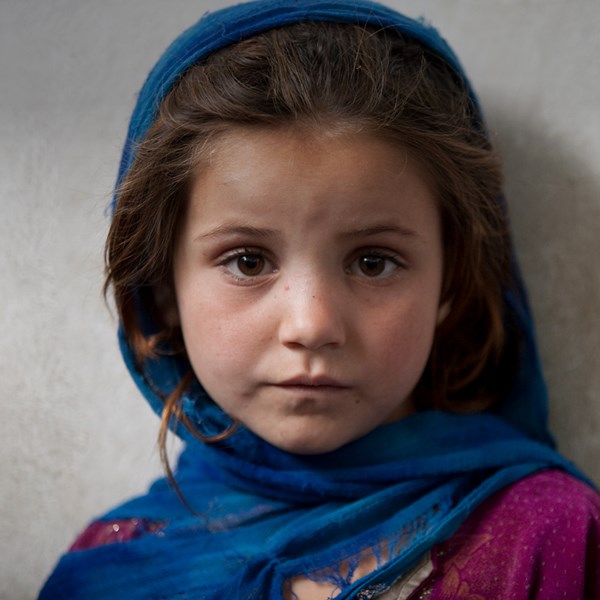
POOLING PHILANTHROPIC CAPITALTO IMPROVE HEALTH AND LIVELIHOODS
The Shefa Fund is a pooled fund that fosters collaboration and learning among individual Arab philanthropists, with the goal of improving the health and livelihoods of vulnerable children and families in the Middle East and beyond.
Primary philanthropist Khaled and Olfat Juffali, in collaboration with the Bill & Melinda Gates Foundation
established 2013
Primary Focus Health and emergency relief
geography Middle East and Africa
View More
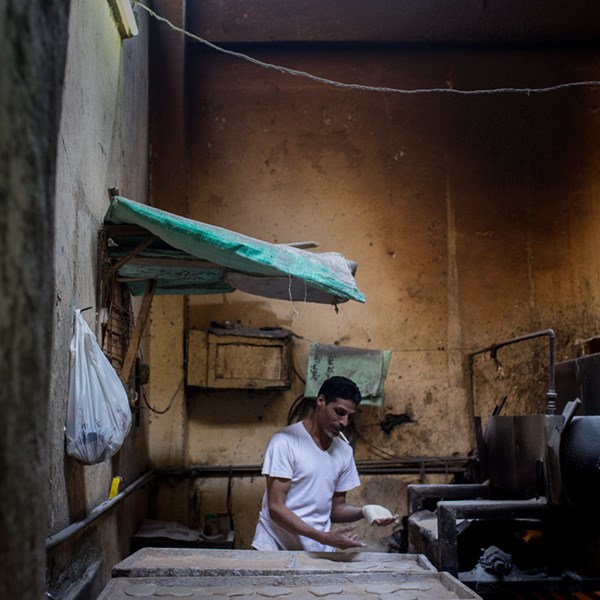
TACKLING HUNGERIN EGYPT
The Egyptian Food Bank launched in 2006 with the goal of wiping out hunger. Today, its innovative approach to food relief and tackling the root causes of hunger has spread to 30 countries worldwide.
Primary philanthropist MOEZ EL SHOHDI
established EFB WAS ESTABLISHED IN 2006; FBRN WAS ESTABLISHED IN 2013
Primary Focus FOOD SECURITY
geography EGYPT AND THE ARAB REGION
View More
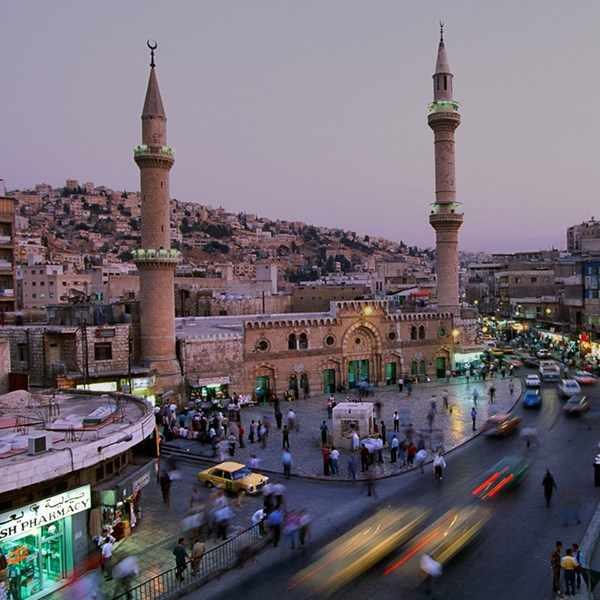
CUTTING JORDAN’STRAFFIC DEATHS
The Hikmat Road Safety (HRS) initiative aims to reduce the high number of traffic-related injuries and fatalities in Jordan and bring about lasting change in the road safety system by creating awareness around the issue, developing road safety infrastructure, and changing behaviors of drivers and pedestrians.
Primary philanthropist MAHER KADDOURA
established 2008
Primary Focus ROAD SAFETY
geography JORDAN
View More
